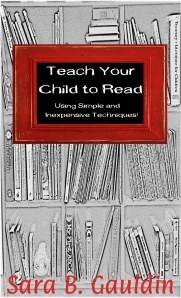My child knows their A,B,Cs!
If your child has been enrolled in a preschool program or has been exposed to television programing that is slotted for early-childhood education (PBS) they most likely have learned to sing along with the alphabet song. I can recall my oldest son singing the song to me as a two-year-old. I was thrilled. I knew my child was a genius! However, he still couldn’t read. Learning the song is a great tool. Many of us still use it as adults when faced with the task of filing or alphabetizing something. The alphabet is just a pretty song until a child can recognize the individual symbols and associate them with specific sounds.
Of course, every child must learn letters. I bought flash cards with each letter embossed with a colorful glossy picture. Hindsight being one hundred percent; that eye-catching picture was trying to tell me something. They represented the sound that the letter made! We spent hours practicing the correct identification of A, a, B, b, C, c and so forth. My smart little boy was naming letters with ease. I was delighted. He would be reading any day! The truth was he was learning, but not all of what he would need to use to utilize the set of symbols to read.
Letter names are great; letter sounds are where the value for achieving literacy lies.
Letter Recognition
Despite the fact that learning to recognize letters did not magically enable my son (or my students) to read, it is still a worthwhile endeavor. If a child can consistently identify letters by their shape and position on the page, he or she is in a much better position to add meaning and utility to that knowledge when they take the process to the next level by adding the sounds that the letters represent.
Try this!
Teach letters as pairs. Show letters as A, a. Children need to understand that both symbols mean the same letter. One is a capital, and one is lowercase, but they are the same letter.
Bring the flashcards back into the picture. This is a valid tool for practicing letter recognition.
Tie letter concepts to writing. Be careful to practice proper grasp of the pencil- this habit is hard to “unlearn.” Begin by tracing letters that are already formed. Commercially produced workbooks are acceptable for this purpose and can be purchased at your local Wal-Mart in the book section. If you would rather produce your own, you can buy or print lined handwriting paper and write the letters yourself, or download the free font at the website listed below that will allow you to type and print properly formed letters using a Microsoft Word document.
Free printable lined paper http://donnayoung.org/penmanship/handwriting-paper-bw.htm
Free font download for Word http://www.fontspace.com/kimberly-geswein/kg-primary-dots
Lower case pintables http://www.alphabetavenue.net/Toons/AlphaToons%20Handwriting%20Practice%20LC.pdf
Upper case pintables http://www.alphabetavenue.net/ABC/Trace%20and%20Write%20Caps.pdf
Other Ways to Learn Letter Names:
Get messy! Cover the bottom of a cookie tray with a thin layer of salt. Help your child to use their finger to draw letters in the salt. Talk about which letter and what parts it needs to have to make the shape correctly. If the letter needs a long line, a short line, a curve or a dot point that out as the shape is made. The tray can easily be reset by gently shaking the tray to spread the salt. This strategy has the potential to hold an active child’s attention.
Another mess producing method is to use shaving cream on the kitchen table. Spray a thin coating of the product directly onto to surface of the table. Guide your child to use their fingers to make the shapes of letters. Make sure to point out the letters name and the key features of each letter’s form. The key to this method and the salt tray is to do this activity with your child. Letting the little one play with the shaving cream or trays with no guidance will guarantee a huge mess and no results.
Use Play dough to make letters. For very young children, the adult involved will need to help by creating “snakes” or long tubes of the dough by rolling the play dough between their hands. Create the shapes of the letters. Talk about what parts the letter needs to make each one correctly. Many children enjoy seeing their own name built in this manner.
Create little swashbucklers! Invest in a foam sword. Occasionally various dollar stores sell these toys. In an open space have your child air carve the letter you call out in the style of the character, Zorro!
Children of all ability levels learn through repeated exposure to the information they need to retain. Have your child view the alphabet on a regular basis. Have him or her touch each letter as they say its name. This chart (http://www.alphabetavenue.net/Toons/AlphaToonsChart.pdf) is a free download. It can be printed on one page and is great for refrigerator display.
After your child has ample opportunity to practice and recite the alphabet it is time to move forward to sequence and matching activities. Create a set of letter cards with capital letters and lower case. Make sure the letters are formed correctly and cut apart. To save time you can download a set of alphabet cards (http://www.teacherspayteachers.com/Product/ABC-sort-835425).
Use the cards to have your child match the capital version of the letter to its lowercase partner. Use either set to practice putting the symbols in order.
Related articles
From Our House to Yours: Letters (campbellsclass101.com)
FUN WITH LETTERS (Weeks of November 18th- November 29th) (tykesofkeswick.wordpress.com)
Learning the Alphabet (ingspirations.com)
Free Alphabet Charts for Preschoolers (ingspirations.com)
{Early Literacy Stage 6} Lowercase letter writing (wildflowerramblings.com)
The Power of the Alphabet (wwang40.wordpress.com)
Top 10 FREE Apps for Learning Letters! (smartappsforkids.com)
Introducing Letters (pumkinsandme.wordpress.com)






